This weekend, an exhibition opens at the V&A that you can’t visit because the demand for tickets has been so great that the earliest anyone can visit now is the middle of December. That’s the appeal of the apparels created by a designer best known simply as Chanel.
Born into relative poverty, Chanel was taught to become a seamstress and while trying to become an actress, she met a rich man, setting the stage for several rich dalliances in her life. It was her later affair with the polo-playing, Captain Arthur Edward ‘Boy’ Capel that not only triggered her interest in British textiles but also gave her the money to start her business as a fashion designer back in France.
She was both a clever designer, giving ladies what they wanted to wear while pushing the limits of conventional clothing, but also a clever businesswoman, at a time when women were still expected to be rather more domestic in attitude.
The V&A’s large exhibition space is sometimes left open to wander around, but this time, they’ve filled the space with a winding corridor of shop windows giving glimpses into some of the clothes that made her famous, and rich, and a reasonable collection of archival documents.
Room after room have been filled with enough dress-covered mannequins to have emptied a few department stores of their spares. Unsurprisingly, the little black dress is here — or more correctly, dresses, as there was a whole range of them, originally described as the Ford dress, because it came in every colour you wanted so long as it was black.
One of Chanel’s most famous creations was the famous No. 5 perfume. It was mainly a licensing agreement, for which Chanel attached her name for ten percent of the profits while the perfume itself was manufactured by the businessman Pierre Wertheimer. Although the perfume, in its, at the time, radically plain bottle, became a commercial success, Chanel’s attitude to Wertheimer was to taint her reputation, as she petitioned the government of Nazi occupied France to let her, a white woman take control of a Jewish owned company.
Although also accused of collaborating with the Nazis, she was cleared after the war by both British and French investigations, although the stain of anti-semitism followed her for the rest of her life. The exhibition doesn’t hide this aspect of her reputation, with a number of documents, some only recently rediscovered, looking at her wartime activities.
After a lengthy time away, she made a comeback in 1953 after hearing that Christian Dior had said a woman could never be a great couturier. That slight was enough to give a new generation of ladies a chance to wear Chanel’s newest creations.
A dramatic room filled with rows of later dresses is visually impressive. Maybe my sci-fi imagination running away with me, but it did give me vibes of evil floating aliens being kept in storage and could come alive at any moment to wreck carnage.
Fitting perfectly into the sense of glamour in the exhibition, the show ends with a showpiece of a grand staircase that looks straight out of a Fred Astaire and Ginger Rogers musical. The exhibition ends with the auction that took place seven years after she died, and the outfit that the V&A was able to buy when the auction took place — a black suit and matching hat.
In a way, it doesn’t matter what I thought of the exhibition, as it’s nearly sold out already, but yes, if you’ve bought tickets because you want to see Chanel, then you’ll not be disappointed. There’s a lot of Chanel on display from dresses to drawings, but also in an exhibition that’s been designed to give the atmosphere of luxury and style that she was famous for.
One niggle I have with the exhibition is the lighting. While it’s true that valuable fabrics shouldn’t be exposed to too much light, the exhibition could do with a better quality of lighting. There are too many reflections on glass, particularly from the films being shown on TV screens and a lot of backlighting makes it hard to see the details at times. Some of the little black dresses have ended up looking more like silhouettes, which is a shame.
The exhibition, Gabrielle Chanel. Fashion Manifesto is at the V&A Museum until 25th February 2024.
- Adults: £24
- Young adults (12-25) / Disabled person: £16
- Under 12 / Universal Credit: Free
- Art Fund: £12
Tickets are recommended to be booked in advance from here as it’s already sold out until the middle of December.

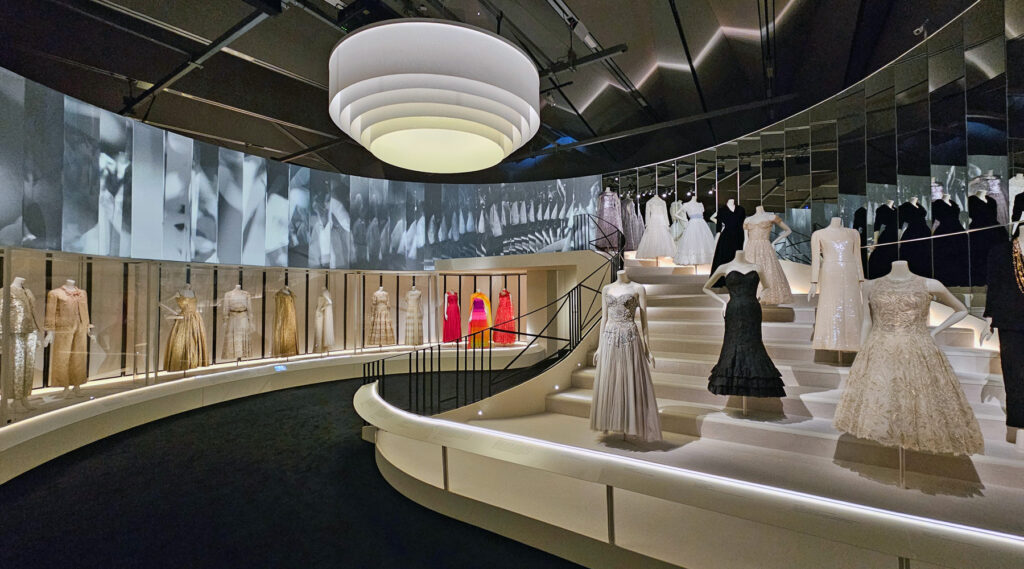
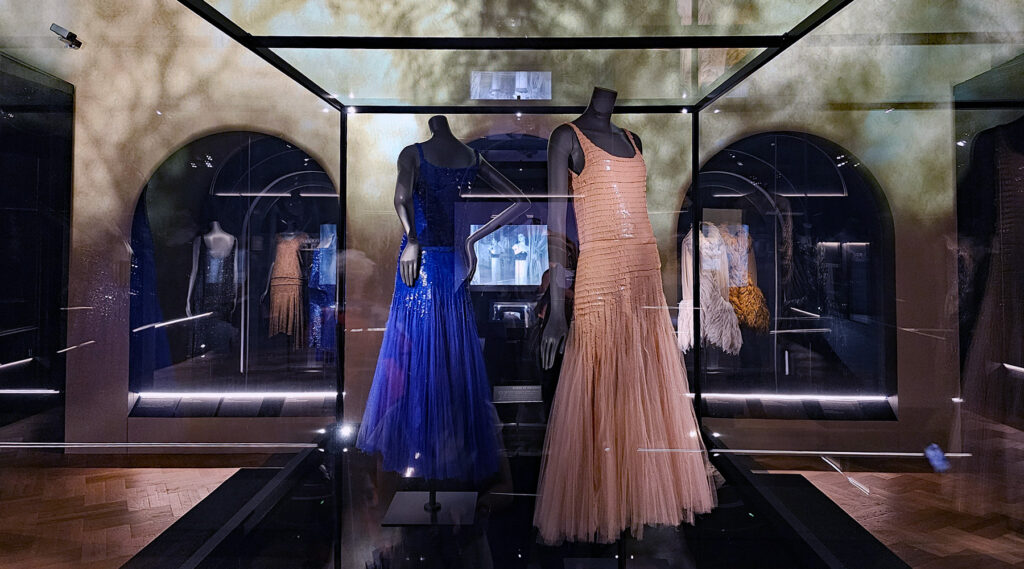
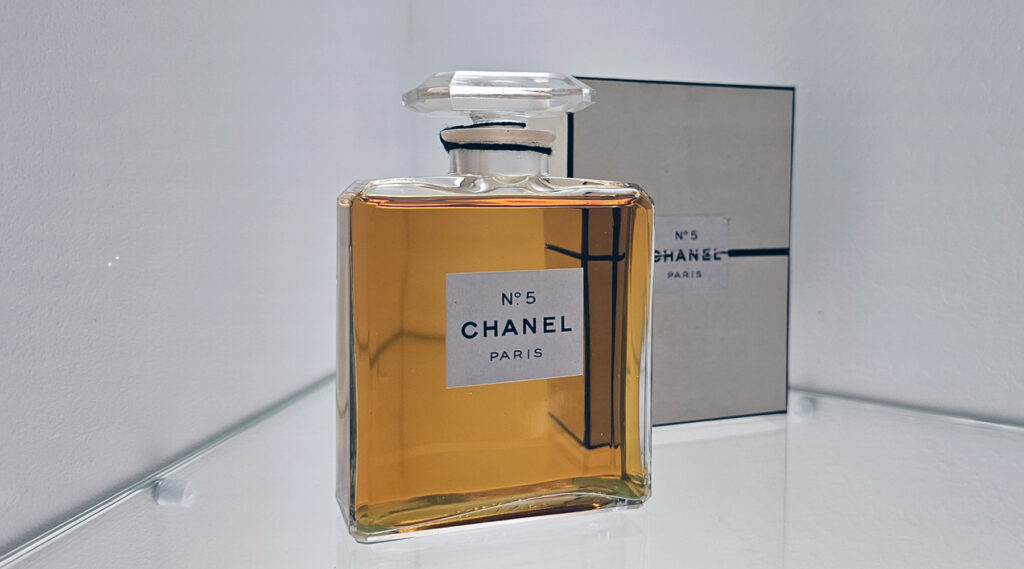
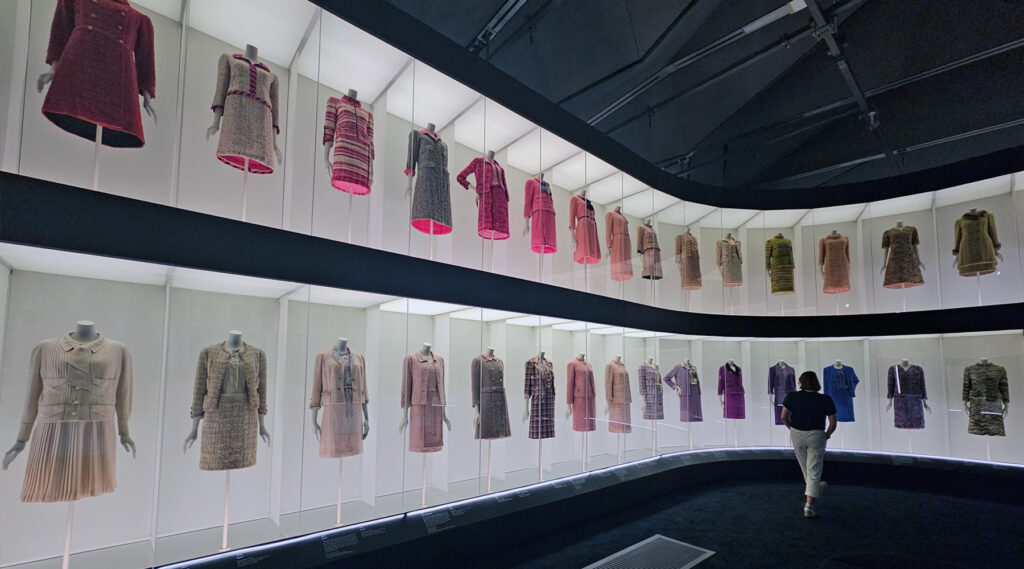
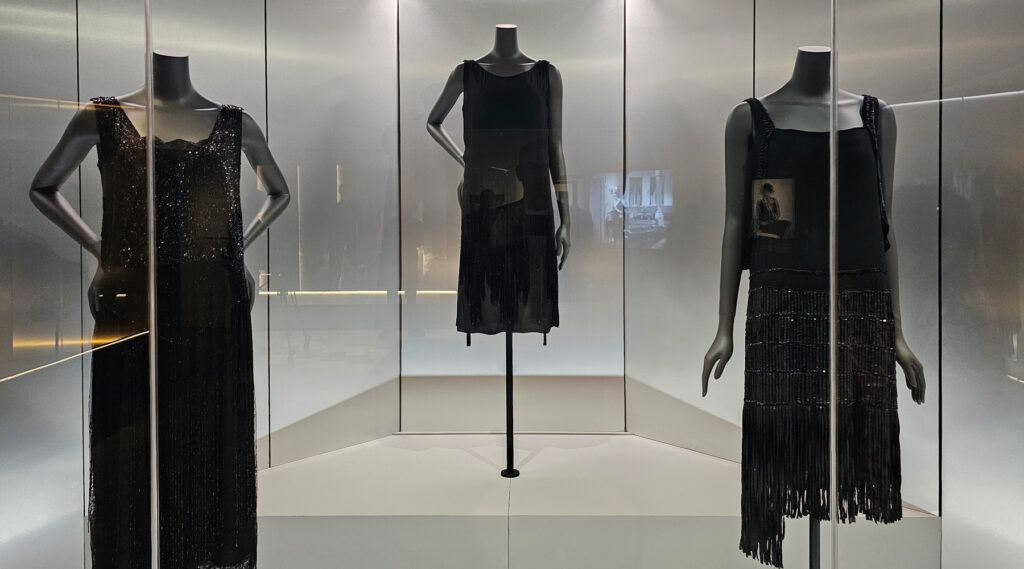






Leave a Reply